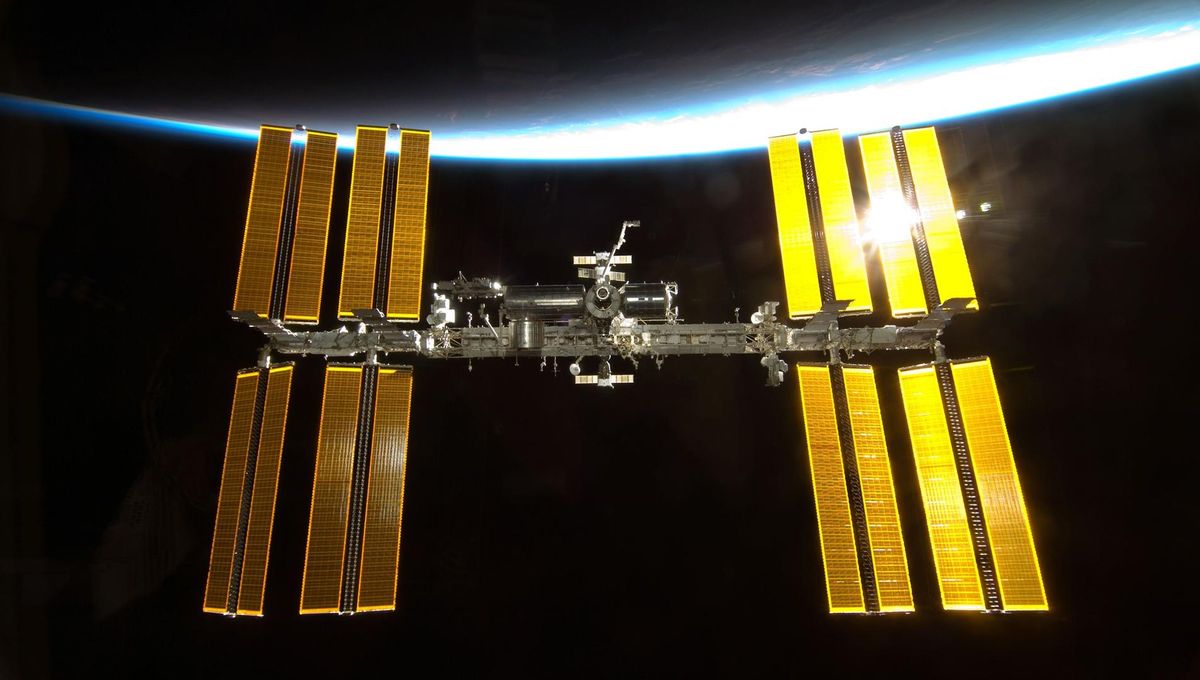
On Saturday, November 2, humans will have continuously lived in space on the International Space Station (ISS) for 24 years. It has been a momentous quarter-century for sure, and the ISS is not getting any younger. The current plan is for the space station to continue working until 2030 and then be deorbited in 2031. However, a new audit has revealed that the plan has risks and that even the dates are far from certain.
The crucial thing to say now is that the astronauts and cosmonauts on board are not in any immediate danger. Even having gone beyond its planned operational life, the ISS continues to work well. But in the long term, there are increased risks that need to be taken extremely seriously. A pressing matter is leaks, especially from the Russian segment of the ISS; the atmosphere loss to space peaked just few months ago.
“On-going cracks and air leaks in the Service Module Transfer Tunnel are a top safety risk; and NASA and Roscosmos are collaborating to investigate and mitigate the cracks and leaks, determine the root cause, and monitor the Station for new leaks. However, in April 2024 NASA identified an increase in the leak rate to its highest level to date,” the report states.
Over the summer, NASA and Roscosmos – the Russian space agency – have sealed multiple spots among the 50 areas of concern detected. Not all of them were believed to be leaks; some could have been simple scratches on the surface.
Not all danger of leaks comes from age or wear and tear. A couple of years back, one of the Russian Soyuz Capsules was hit by a micrometeoroid or a small piece of space junk. That led to a coolant leak that forced the two cosmonauts and one astronaut who traveled up with it to stay on for another six months and wait for another capsule to be sent up.
The report actually raises the seriousness of both these points. NASA has decided to take some risks when it comes to micrometeoroids and orbital debris (MMOD) due to the rising cost of adding protective exteriors. The agency plans to increase the orbital debris tracking capabilities to monitor dangers before they might arise.
Another related point is the astronauts’ ability to shelter in the spacecraft they traveled in. Still, the shelter might not be enough if an evacuation is necessary.
“While the ISS Program has sufficient plans and procedures in place to ensure crew safety in response to routine or emergency threats to Station operations, these plans continue to evolve,” the report summary continues. “However, due to the high costs and a limited budget, the lack of ready-to-launch vehicles prevent the Agency from having an immediate response capability if crew vehicles encounter significant damage and are no longer safe for crew evacuation.”
The other looming issue is the timeline. The ISS is a collaboration between NASA, Roscosmos, the European Space Agency, the Japanese Space Agency, and the Canadian Space Agency. Following Russia’s invasion of Ukraine and the sanctions imposed on many Russian officials, Roscosmos announced multiple times that it was going to pull out of the ISS and build its own space station. While those plans currently remain rhetoric at best, the other agencies have agreed to keep the ISS going until at least 2030.
One issue around this is the idea that by that year, there should be multiple private space stations in low-Earth orbit as well as the Gateway around the Moon, so that NASA’s operations in space can continue. That is not certain anymore given significant delays to the return to the Moon, including SpaceX’s Starship not being ready on schedule. NASA might therefore want to keep the ISS going for a little longer.
Whether it’s six years or maybe 12, the station will require further repairs and upgrades, some of which might use components that are no longer in production. Supply chain issues will only get worse if the ISS needs to continue its operations beyond 2030. Last but not least, there’s the issue of actually bringing the ISS down safely. Currently, it can only be done with the use of Roscosmos’ Soyuz.
“Without commitment from Russia to the current deorbit plan, the ability to conduct a controlled deorbit is unclear. In June 2024, NASA awarded a contract to SpaceX to develop the US deorbit vehicle to execute the controlled deorbit of the ISS in 2031,” the report explains. “Nonetheless, the uncertainty of commercial LEO destination-readiness, limited budget availability, and the potential delay in availability of the US deorbit vehicle adds more schedule challenges and risks to NASA’s 2031 deorbit plan.”
The importance of the International Space Station over the last 24 years has been undeniable. This report highlights what need to be taken seriously for its continuing mission, and serves as a reminder that space is not easy.
Source Link: Cracks, Air Leaks, And Hazardous Space Junk: NASA Identifies Top Threats To Aging ISS